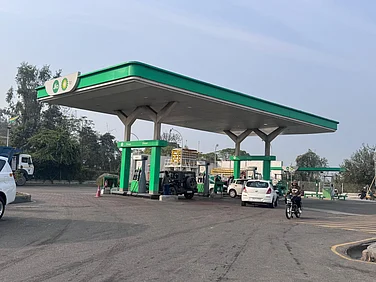Amid escalating climate‑driven calamities—unrelenting cloudbursts, deadly flash floods, and landslides—the Supreme Court has fired a sharp warning shot, both at the Himachal Pradesh government and the Centre, about the deepening ecological imbalance, threatening not just the pristine hill state’s fragile environment but its very survival.
Taking note of the situation, which the state is currently facing in the aftermath of the destructive flash floods and landslides, the top court said the situation in the state has gone from bad to worse.
“The severe ecological imbalance and other environmental conditions have led to serious natural calamities over the years. This year too, hundreds of people perished in the floods and landslides, and thousands of properties were destroyed. Nature is definitely annoyed with the activities, which are going on in the state of HP,” said a bench comprising Justices J. B. Pardiwala and R. Mahadevan.
The bench dismissed an appeal filed by a private company, M/S Pristine Hotels and Resorts Pvt. Ltd., against a notification issued by the state’s Department of Town and Country Planning (TCP) to declare Shri Tara Mata Hill as a ‘green area,’ thus prohibiting all fresh private constructions.
It, rather, invoked its ‘suo-moto’ power to take up the issue of growing environmental degradation and climate-fueled disasters as a Public Interest Petition (PIL) seeking a state government response, within four weeks, if it has any action plan to meet the issues of environmental damage and unplanned development activities in the ecologically sensitive zones.
Rapping unchecked construction, highway expansion, hydropower projects, tunnels, and rampant deforestation, the Supreme Court said disasters in Himachal Pradesh cannot be blamed solely on nature. “Humans, not nature, are responsible for landslides, collapsing buildings, and sinking roads,” the Bench observed.
"If things proceed the way they are as of this date, then the day is not far when the entire State of HP may vanish in thin air from the map of the country," it cautioned.
On a larger point, the Court also went on to remind that the state has been witnessing rising average temperatures, shifting snowfall patterns, and an increase in the frequency and intensity of extreme weather events. Glaciers, the primary source of many rivers in the region, are retreating at a concerning rate, raising the risk of glacial lake outburst floods. The biggest Bara Shigri glacier in Lahaul Spiti has been reduced by almost 2-2.5 kilometers.
Further, unseasonal rainfall and prolonged dry spells affect agriculture and water availability. Erratic weather patterns also destabilize slopes and affect biodiversity. These changes threaten not only the environment but also the livelihoods of local communities. Forest degradation is a major concern. Forest fires, encroachments, overgrazing, and the expansion of agricultural and urban areas are all contributing factors.
The bench reminded the state of its natural wealth but pointed out how greed for earning revenue has resulted in destruction and imbalance. Despite having been an environmentally rich state, its own people are today responsible for such blind pursuit of development, to their own detriment. It is a classic example of not knowing your own surroundings.
"Nature has bestowed abundant beauty on Himachal Pradesh. Its lofty mountains, diverse flora, and cool climate attract tourists from far and wide; the government launched four‑lane road projects to boost tourism. Heavy machinery and explosives were reportedly used to cut through the mountains. As a result, the natural balance of the region has begun to deteriorate, the bench warned.
The danger to this natural richness is growing as a result of human greed and apathy. There are numerous environment-related issues, direct or indirect, facing the state of HP. Because of its delicate mountainous geography, the state is at risk for earthquakes, flash floods, and landslides.
“It’s high time that the state of HP pays attention to what we have observed and starts taking necessary action at the earliest. The Union of India also owes an obligation to see that the ecological imbalance in the state does not get further disturbed and natural calamities do not occur. Of course, much damage has been caused, but there is a saying that “something is better than nothing.”
There is also a need for all Himalayan states and pan-India to collate resources and expertise so as to ensure that development plans are cognizant of these challenges. When contacted, the state’s Chief Secretary Prabodh Saxena said, “We have just received the copy of the judgement. I will go through it next week. The state government is certainly conscious about environmental protection and has initiated steps to minimise the impact of climate change in the state. Our decision to declare Mata Tara Devi as a green area has been appreciated by the supreme court,” he said.
The state's minister for Town and Country Planning, Rajesh Dharmani, acknowledged the gravity of the Supreme Court’s warning, calling it a wake‑up call for the state. “This is a highly sensitive matter. It is high time we take tough decisions to safeguard Himachal’s fragile ecology. Our development strategies must change,” he said. He says several steps are underway to turn Himachal Pradesh into a green state of India by 2027. It's true that the impact of climate change and global warming has started becoming visible in the Himalayas. The centre should help and devise a separate funding pattern for the Himalayan states, Dharmani demands.


























